Technology

5 min
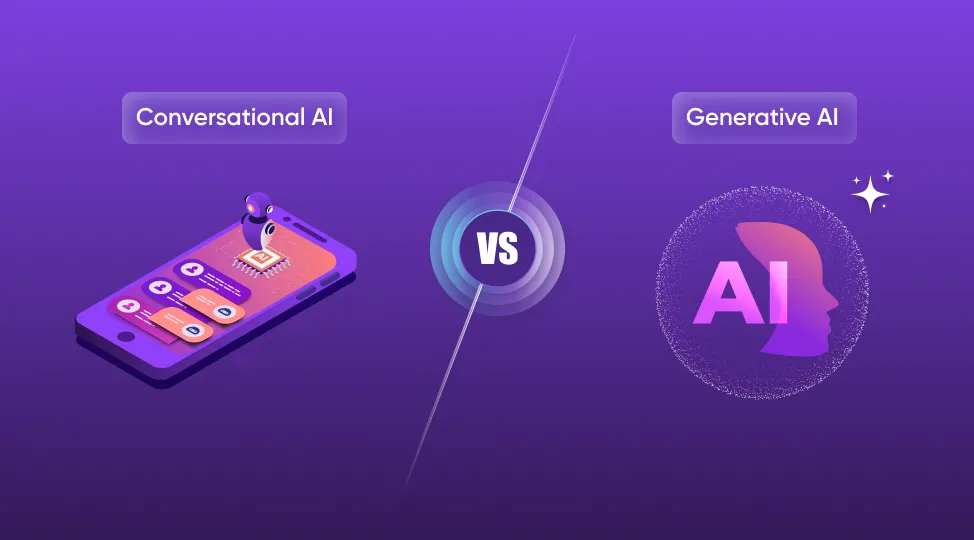
Struggling to pick between conversational AI vs generative AI for your business? This guide explains the core differences, real-world use cases, and when to use each. From conversational AI in healthcare to generative AI implementation for content, discover what fits your enterprise product best.

By Dhruv Joshi
30 Jul, 2025
Not sure if your enterprise needs a chatbot that chats or one that writes like a human? The difference between conversational AI and generative AI can define your product's success.
The AI space is growing fast. Every year, more businesses are jumping in. In fact, McKinsey says over half of companies now use AI in at least one area of their work. Another report from Gartner says that by 2026, most customer service tasks will be handled by AI tools.
With this massive shift, one big question keeps popping up. Conversational AI vs generative AI, which one should your business choose?
This isn't just about tech buzzwords. Picking the right type of AI can impact how your product performs, how your users feel, and how fast you grow in the market.
In this blog, we'll keep things simple. You'll learn the real differences between generative AI vs conversational AI, where each one fits best, and how they work in real business use. From Conversational AI in healthcare to AI chatbot development services for banks or factories, we'll walk you through solid, real-world advice you can act on right away.
Let's keep it simple and clear. Before you decide which one fits your business, you need to know how conversational AI vs generative AI really work.
Conversational AI is made to talk to people. It understands what someone types or says, then gives a useful answer. You see it in chatbots, help desks, and voice assistants.
It does a great job at:
It follows what it's trained on, like saved questions or rules. That's why it works best when the task is clear and repeatable.
You'll find conversational AI in healthcare, banking, insurance, and many other places. It's used by lots of conversational AI companies to improve both user and employee experience.
Generative AI is a bit different. It doesn't just reply, it creates. That means it can write emails, blogs, replies, ideas, and more, from scratch.
It learns from a large amount of data like books, websites, and documents. Then it uses all that to build something new that sounds natural.
It's good for:
This clearly separates generative AI from conversational AI. Conversational AI responds. Generative AI creates.
Here's a clear comparison to help you understand conversational AI vs generative AI from a product perspective:
So, depending on what your business needs, replies or new content, one will fit better than the other.
| Feature | Conversational AI | Generative AI |
|---|---|---|
| Main Use | Real-time dialogues, support automation, voice/chat interactions | Generating human-like content, responses, summaries, or media |
| Training Data Type | Structured datasets (FAQs, scripts, predefined flows, intents) | Unstructured datasets (text corpora, web data, manuals, internal docs) |
| Output Type | Predefined responses, dynamic replies based on user input | Brand-new content: emails, blogs, reports, images, product descriptions |
| Customization Method | Rule-based workflows, chatbot builders, API integrations | Model fine-tuning, prompt engineering, custom embeddings |
| Model Examples | Google Dialogflow, Microsoft Bot Framework, Rasa | OpenAI GPT, Claude, Cohere, LLaMA, Gemini |
| Integration Options | Easily connects with CRM, helpdesk, WhatsApp, Slack, website widgets | Plug into CMS, email tools, marketing platforms, documentation software |
| Use Cases | - Conversational AI in banking (fraud alerts, FAQs) - Healthcare (appointment booking, patient guidance) - Internal HR bots, IT helpdesk, onboarding |
- Content ops - Email reply automation - Report summarization - Legal contract draft suggestions |
| Response Time | Near-instant (100–500ms) for simple intents | Slight delay (1–3s) depending on content length and model |
| Complexity Level | Lower — can launch with simple setup, no deep dev work | Higher — may require devs, model tuning, or hosted APIs |
| Security & Privacy | Can be kept on-prem or within secure enterprise cloud | Needs stricter review if accessing large public models (depends on provider) |
| Team Required | Product manager + non-tech chatbot builders (low-code tools available) | AI engineer or AI development company, especially for fine-tuning and deployment |
| Best For | Enterprises wanting faster, consistent support at scale | Teams needing faster content creation, summaries, or smart auto-writing |
| Cost to Deploy | Lower for MVPs and basic workflows | Higher for custom training, but scalable with API pricing |
| Maintenance Needs | Needs regular flow updates, script changes, retraining on new queries | Needs prompt improvements, retraining only if fine-tuned models used |
Let's explore how to choose between conversational vs generative AI, based on your business type, product goals, and industry needs.
1. For Customer Support Products
If your enterprise product aims to streamline customer service, conversational AI is your best bet.
Best Use Cases:
Conversational AI in banking (handling account queries, fraud alerts)
Conversational AI in insurance (claim status, policy updates)
Look for enterprise AI chatbot development service providers that can tailor the bot to your workflows.
2. For Creative and Content-Based Platforms
If your enterprise deals in media, marketing, research, or automation, then Generative AI implementation will add more value.
Ideal For:
3. For Internal Process Automation
Here, the line blurs. Many companies now combine conversational AI with generative AI to automate internal processes.
Example:
This combo improves employee engagement and reduces manual work.
4. For Healthcare & Compliance-Heavy Fields
Healthcare is unique. It needs accuracy, privacy, and adaptability.
Conversational AI in healthcare is widely used to:
But pairing it with generative AI allows systems to:
Conversational AI healthcare tools are improving patient satisfaction while easing provider workload.
5. For Manufacturing and Industrial Use
AI in manufacturing industry products benefit most from conversational AI when used for:
Adding generative models can enhance:
Let's now break down the top business benefits of using the best conversational AI in your enterprise product.
1. Cost Savings
Automating responses and tasks reduces support costs dramatically.
2. Round-the-Clock Service
Chatbots never shut down. This means 24/7 coverage without added headcount.
3. Better Customer Experience
Fast, consistent replies improve user satisfaction and loyalty.
4. Scalable Across Channels
Works across web, mobile, and social wherever your users are.
When used right, generative AI vs conversational AI brings a different kind of power.
1. Speed Up Content Workflows
Marketing, HR, and even legal teams can generate content at scale.
2. Personalization at Scale
Generate unique versions of emails, product messages, and campaigns based on user data.
3. Knowledge Summarization
Perfect for summarizing large reports, documents, and user feedback.
Use this quick guide when deciding between conversational vs generative AI for your next enterprise product:
Choose Conversational AI if:
Choose Generative AI if:
Modern products are increasingly hybrid. Leading conversational AI companies now build products that embed both technologies.
This blend improves not just customer experience but also employee efficiency especially in tools focused on conversational AI chatbot vs assistants, employee experience solutions.
Getting started with conversational AI or generative AI might sound complex, but when broken into steps, it's actually doable. Below are simple technical actions your business can follow to begin the right way:
1. Define Your Use Case Clearly
First, figure out what problem you want to solve. Ask questions like:
2. Choose a Suitable AI Model or Platform
Pick a base AI model that fits your case.
If you're unsure, talk to an AI development company that can guide you to the right base tech.
3. Prepare and Organize Your Data
AI runs on data.
4. Start with a Small MVP
Build a small proof-of-concept first.
5. Test the AI System Thoroughly
Before going live, test everything.
6. Add Integration to Your Tools
Once stable, connect your AI to your tools.
This step turns your AI from a demo into a working business tool.
7. Monitor, Improve, and Train Regularly
The talk around conversational AI vs generative AI is not really about which one is better. It's about what your product truly needs.
Every business is different. Some need fast replies. Others need fresh content. Many need both.
The smart move is to pick what solves your real problem today and can grow with you tomorrow.
Whether you work in banking, insurance, manufacturing, or you're building Conversational AI for healthcare, the right time to start with AI is now.
If you're ready to build something real and useful, Quokka Labs can help. We bring years of experience in AI chatbot development services and custom solutions. Whether it's generative AI or conversational AI, we've got your back.
Talk to us. Let's turn your idea into something smart, simple, and scalable.
1. What is the main difference between conversational AI vs generative AI?
The biggest difference is in what they do. Conversational AI is built to talk and reply, like in chatbots or voice assistants. It handles tasks like support, queries, or booking. Generative AI creates new content like emails, reports, or summaries. So, think of one as replying and the other as creating.
2. Which is better for customer support - generative AI vs conversational AI?
For most customer support jobs, conversational AI works better. It can handle common questions, give updates, and help users without delay. It's fast, smooth, and easy to train. If you want to automate support at scale, go with the best conversational AI that fits your industry.
3. Can I use conversational AI and generative AI together in one product?
Yes, and many businesses are doing that now. For example, conversational AI in insurance can chat with customers, while generative AI can write claim summaries or custom messages. Using both helps you offer better replies and smarter content in one experience.
4. How is conversational AI used in healthcare and other sensitive fields?
Conversational AI in healthcare helps with appointment bookings, patient queries, and sharing medical info clearly. It's safe, private, and easy to manage. Many tools for conversational AI healthcare follow strict data rules, so they fit well even in sensitive industries.
5. How can my company get started with AI chatbot development services?
Start by knowing what your users need. Then talk to a trusted team like Quokka Labs. We offer full enterprise AI chatbot development service for startups, small businesses, and large teams. Whether it's conversational AI chatbot vs assistants employee experience or content-focused tasks, we help you build the right solution from day one.
Generative AI Tech Stacks: Choosing the Right Tools for Scalable AI Development
By Dhruv Joshi
5 min read
Choosing Best Tech Stack for Web App Development: Performance, Cost, and Scalability
By Dhruv Joshi
5 min read
Top 9 Tech Stacks for Scalable Web Application Development
By Dhruv Joshi
5 min read
Generative AI Implementation Strategy: From Concept to Deployment (Step-by-Step Guide)
By Sannidhya Sharma
5 min read
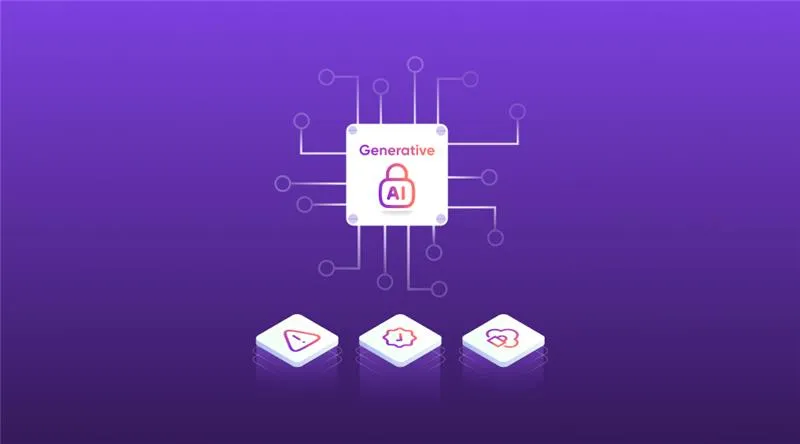
Technology

7 min
Generative AI is moving fast into enterprises, from banks to hospitals to government agencies. Adoption is rapid, but security planning lags. Unlike traditional systems, these models can be exploited through prompt injection, poisoned data, or manipulated to leak sensitive information. They are also misused for phishing, deepfakes, and malicious code.

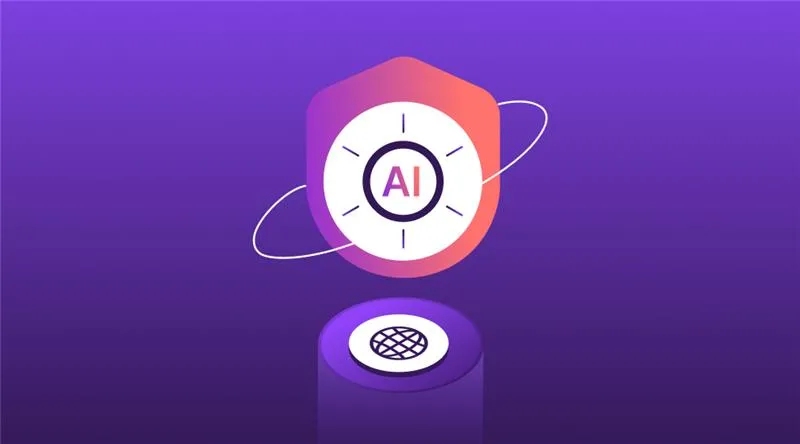
Technology

7 min
AI-powered Web Application Firewalls (WAFs) go beyond static rules by using machine learning, anomaly detection, and predictive analysis to block zero-day threats, reduce false positives, and protect APIs at scale. Unlike traditional WAFs, they self-learn, adapt in real time, and cut operational costs while improving compliance and trust.

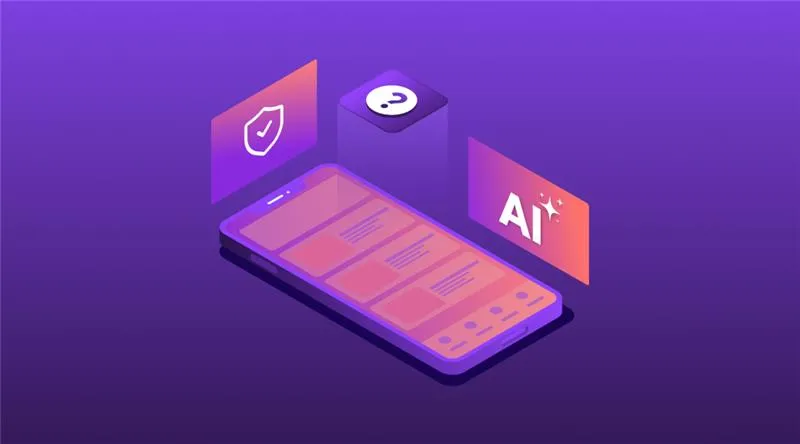
Technology

5 min
AI is redefining mobile app security by transforming how threats are detected, tested, and prevented. From continuous monitoring and fraud detection to compliance with regulations, AI ensures apps remain resilient against modern risks. This means safer apps, protected users, and stronger businesses. Investing in AI-driven security today builds trust, drives growth, and secures long-term competitive advantage.

Feeling lost!! Book a slot and get answers to all your industry-relevant doubts